Sony Pictures Animation’s Spider-Man: Into the Spider-Verse delivers a fantastic looking adventure, featuring many diverse versions of Marvel’s beloved webslinger.
A few years ago, when the hot writing/producing team of Phil Lord and Chris Miller were approached by Sony Pictures Animation to work on a new Spider-Man project, they knew that they didn’t want to see just another run-of-the mill superhero movie. They wanted the pic to look fantastic and pay homage to classic comic books of the Golden Era. They also didn’t want to repeat any of the old Peter Parker scenarios.
“We always felt like the magic of this character is that anyone could be behind that mask,” explains Lord, who co-wrote the screenplay with director Rodney Rothman. “One of the reasons we fell in love with Miles Morales from the comics is that writer Brian Bendis put a completely new character back there. He’s from Brooklyn, he’s got a strong family, he’s a little bit younger. So, we just thought it was a great way to remix the Spider-Man story and tell it from a different point of view.”
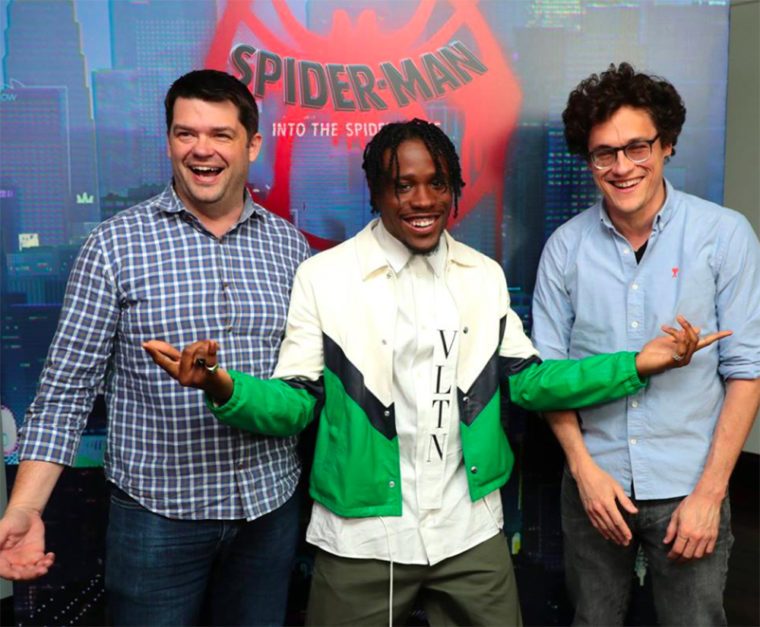
Directed by Bob Persichetti, Peter Ramsey and Rothman, Spider-Man: Into the Spider-Verse follows the adventures of young Miles Morales, who discovers the limitless possibilities and challenges of being a superhero. As he tries to fit into a new school he learns about his strange new powers and the fantastic new multi-verse where different versions of Spider-man co-exist. He soon finds himself being mentored by the original Peter Parker as he tries to save the world from classic, powerful villains from the Spider-Man multiverse.
Spider-Man: Into the Spider-Verse allowed the filmmakers to add new dimensions to Marvel’s beloved web-slinging character, who was first introduced by Stan Lee and Steve Ditko in 1962. “We are all lucky to have been able to work on this phenomenal property that has such a huge audience invested in it,” say Persichetti (head of story on The Little Prince and Puss in Boots). “That’s why we could be bolder with our visual choices and make the movie look different from what a summer or winter blockbuster is expected to look like. Our goal was to expand the visual style and color palettes, and deliver a movie that might seem different than any of the other CG-animated movies we have seen in the past. One of the strengths of the comic is that it manages to encapsulate in one image a really synched, powerful story point, motion or action. In our process of animation, we tried to achieve that same thing.”
“It’s just like that, everybody in your life might be putting on that mask in the evening. We all have to choose to be heroic in whatever way is unique to us and that’s ultimately what Miles figures out.”
- Writer/producer Phil Lord
Led by the directors, the artists and visual effects team at Sony Pictures Imageworks experimented with a dazzling visual style that pays homage to the look of vintage comic books. As director Peter Ramsey (Rise of the Guardians) explains, “Of course, dozens of Marvel movies lean on that look while telling a cinematic story, but I can’t think of any other animated film that make this much of a visual statement. That’s why audiences have had such a great reaction to the film’s original trailer and clips so far.”
Ramsey, one of the top African-American directors working in animation today, says it has been especially rewarding to work on a film centered on a superhero that comes from a diverse background. “Until recently, the scarcity of heroes and lead characters that are not white has always been a bit of a subtle mental stumbling block for people of color,” he shares. “I believe that the introduction of Miles Morales as Spider-Man sparked a renaissance and a trend to reimagine and feature characters that are not white and not male. That’s the story we set out to tell.”
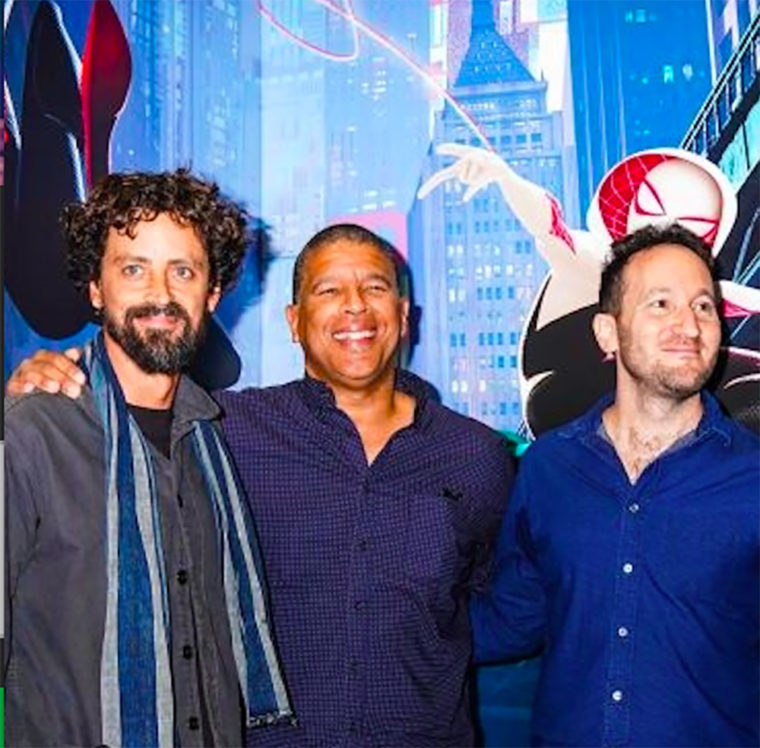
For director Rodney Rothman (writer on 22 Jump Street), the movie has a lot in common with a meticulously planned, epic live-action project. “Every frame had to be carefully crafted,” he explains. “Our general approach was to push every aspect of the movie in a way that we haven’t seen before. In terms of story, just like the original graphic novel, it’s all about Miles Morales’ story, his family and their relationship. We have all these exciting elements of a superhero movie and the various characters and various possibilities of the multiverse, but the heart of the movie is all about Miles’ relationship with his family.”
Visuals That Pop
One of the special things about the new movie is that it uses CG animation in a way that has never been seen in a movie before. As Miller points out, “I think Spider-Verse’s really unique visual style is something that has never been done before. And animation is such a perfect medium to do that. This movie has really pushed the boundaries of what’s just technically possible in order to make it feel like every frame is a painting. The people at Imageworks did an amazing job: our production designer Justin Thompson and the whole team are such talented artists and their love and their talent and passion shows in every frame of this movie.”
“I looked at the early development art that had been created for the movie and felt that, while they were quite beautiful, we could really go farther and explore the comic-book language more,” says Thompson. “I learned how to draw by emulating the artwork I loved in comics, and Spider-Man was a character that I loved from an early age. That’s why I was really excited when Chris and Phil told me, ‘What if you were given carte blanche and could make an animated movie based on a comic book … What have other movies always got wrong? What would you do instead?’”
Thompson says what most movies often get wrong is how super slick and glossy their comic-book universes look. “Comic books are actually quite gritty in the way they’re made,” he points out. “One of the things that appealed to me as a young boy was that I felt as if they gave me a window though a mysterious, darker world. The superheroes were dealing with the same problems that I was dealing with, but the stakes were much higher. Miles’ actions lead to the death of someone very dear to him, and we didn’t want to downplay it. We didn’t want to shortchange that and turn this into a family film where everything is brightly lit and cheerful.”
The technical wizards at Sony Pictures Imageworks set out to recreate the tactile, granular feeling of graphic novels, even going as far as recreating the dot-printing process used in older comic books. “You really feel the artistry as you turned the page,” recalls Thompson. “I know that one thing the computer does really well is realism. But we wanted to bring our own distorted version of reality to animated life.”
“Until recently, the scarcity of heroes and lead characters that are not white has always been a bit of a subtle mental stumbling block for people of color … I believe that the introduction of Miles Morales as Spider-Man sparked a renaissance and a trend to reimagine and feature characters that are not white and not male. That’s the story we set out to tell.”
- Director Peter Ramsey
Thompson points out the result of their work is a completely fresh CG-animated movie that looks like nothing audiences have seen in the past. In fact, each frame of the movie took four times as long to make than a frame of a typical animated movie. “Our goal was to break the traditional CG rules where everything is exact, photoreal and perfect,” he notes. “We wanted to invent our own unique visual language, rich with its own stylistic elements, color palette and shapes — a world where you can definitely notice the choices made by the artists in every frame.”
Playing with Textures and Lighting
As art director Dean Gordon, who also worked on the two Cloudy with a Chance of Meatballs movies with Lord and Miller, explains, “The nature of technology and 3D tends to fight the graphic look. We worked on painting the textures and mapping them on to get a grittier feel through the film. We used gradation and broke down color values into areas and created shorter transitions between them to get a more illustrative feel in the scenes. We brought the same ideas for the characters’ skin tones. Having the skin tones fit in the same environment and use the same hatchings we see in comics elevated that illustrative element.”
Another way to get the comic-book feel was to play with the lighting of scenes throughout the movie. “There’s a tendency in animated movies to go for bright lighting,” says art director Patrick O’Keefe. “We looked at a lot of different kinds of photography and looked carefully at the way light bleeds into the edges of the film. We were allowed to go as dark as the sequence needed to be. A character might be in a black silhouette with rim lighting. We used dark shapes, with just glimpses of light in the darkness. It really extended the range of what we can put up on the screen.”
Senior animation supervisor Joshua Beveridge, an alum of many movies at Sony — including Open Season, Surf’s Up, Cloudy 1 and 2, Arthur Christmas and Hotel Transylvania 1 and 2 — points out, “Our big challenge was creating that balance between being cartoony and realistic. To deliver the best representation of comic books to animated life, we had to break and overhaul our way of looking at things. It led us to frame modulation to get this crunchy, crispy version of pop art. When you do Spider-Man in live action, it never feels completely believable because we had to deal with real physics to put him in these fantastic poses. But animation allows us to break physics. You don’t want to be too choppy and not too smooth. You want crisp pop with aggressive clarity. At Sony Pictures Imageworks, we have an amazing robust pipeline, and I think we have forever altered our pipeline thanks to this project.”
Head of story Paul Watling (Hotel Transylvania 2, Smurfs: The Lost Village) says animation allowed the film to have many advantages over the live-action versions of the franchise.
“We would really push the visuals in ways that live action just can’t,” Watling points out. “There’s a sequence in the movie where Miles and Peter are involved in this above-ground train chase, where one character is attached to the other. It was a story artist’s dream because we were given an empty sandbox and allowed to build the coolest sand castle. The filmmakers weren’t pulling any punches. They kept encouraging us to go further, and we pushed ourselves as much as possible. We threw everything we could possibly could at them, in terms of camera angles, moving frames, comedic elements, police cars hot on their trail to add this sense of urgency — as well as slapstick elements added on. I don’t think we’ve ever seen Spider-Man like this before.”
Harnessing Powerful Technologies
Imageworks veteran Danny Dimian, who is Into the Spider-Verse’s vfx supervisor, sees
The film’s creative journey as a natural evolution of what the studio has been able to achieve over the past two decades. “This return to Spider-Man reminds me of our work on The Hollow Man (2000),” says Dimian. “Back then, what we were trying to do wasn’t readily available off the shelves, so we had to rethink everything. This time, though, we are not writing the software from scratch. We are trying to find a new technique to tell the story.
“One of the strengths of the comic is that it manages to encapsulate in one image a really synched, powerful story point, motion or action. In our process of animation, we tried to achieve that same thing.”
- Director Bob Persichetti
Dimian — whose many credits include the 2002 Spider-Man, Stuart Little 2, The Polar Express, Surf’s Up and Cloudy with a Chance of Meatballs — says the technical team tried to stray away from the rigid formality associated with CG animation. “Computers do everything correctly and you have the right perspective and geometry all the time,” he points out. “What’s interesting about art is all the imperfections that go hand in hand with a human creating things. We had to find a way to break things.”
Among the many stylistic ways the tech team paid homage to old comic books was emulating the way color offsets were not aligned properly in some prints of the run. “We took that as an opportunity to explore how to play with focuses in a scene,” says Dimian. “It was hard to focus on an image when all the color passes were not properly aligned. We thought, ‘What if the camera didn’t de-focus like a lens?’ So, we splintered and offset the image in a way that is similar to a misprint. It has a really cool feel to it that creates this illusion that something is printed on the screen.”
Thompson says that throughout the process, the goal was to keep the comic-book aesthetic alive and well with the aid of the latest in 3D technologies. “Ideally, we want to be able to stop every frame of the film and have it look like an illustration,” he concludes. “We don’t want it to look great only in the wide shots. The dots, the screentones, the panels, the way everything works in a 3D space — it is trippy because it’s all about making you feel like you’re living inside a comic book.”
At the end of the day, the new film’s artistic creators are pleased that all the visual razzle dazzle and technical achievements are serving a story that has a powerful message. “The problematic thing about superhero comics and movies is that they can tell you that someone else is going to come and save you,” says Lord. “I think that the neat thing about having a movie with a bunch of Spider-people in it is you understand that it democratizes everything … That it can happen to any of us, right? It’s just like that, everybody in your life might be putting on that mask in the evening. I want young people to understand that it’s up to them. That they cannot wait to be chosen. And that it’s not a birthright. We all have to choose to be heroic in whatever way is unique to us and that’s ultimately what Miles figures out.”
Sony Pictures Animation’s Spider-Man: Into the Spider-Verse swings into theaters on December 14.



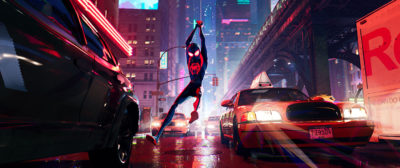

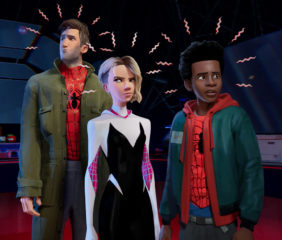
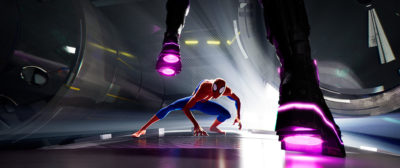
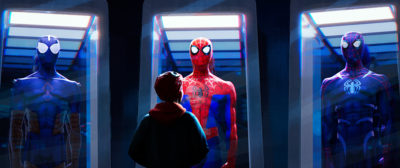
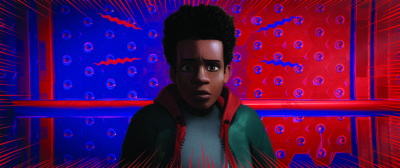

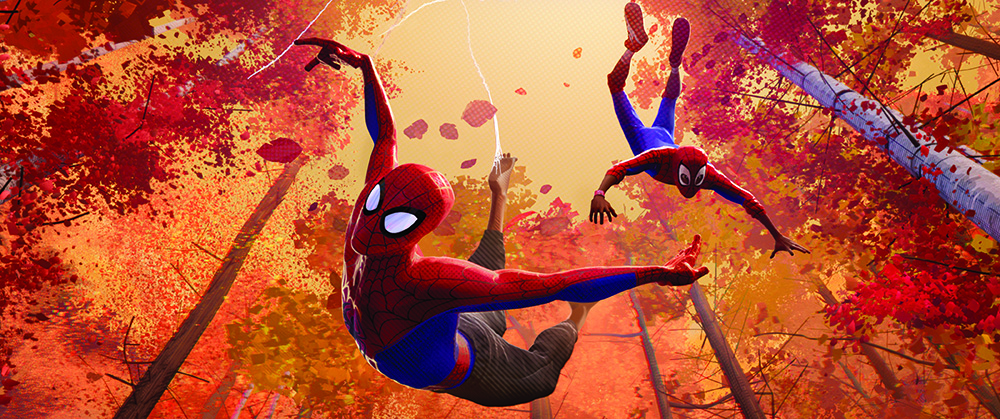
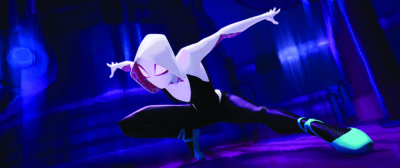
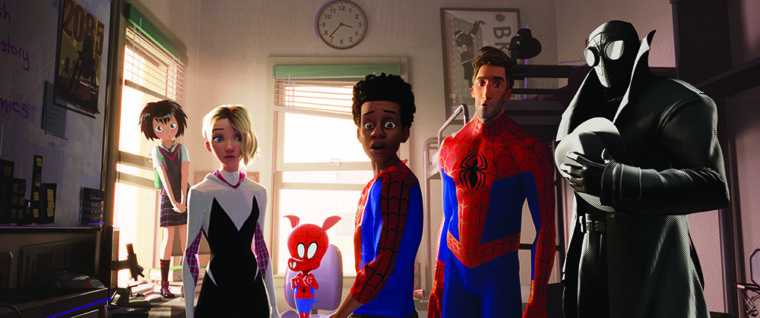

 Win a Funko X Lilo & Stitch Prize Pack!
Win a Funko X Lilo & Stitch Prize Pack! 
